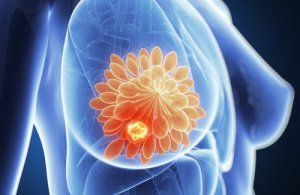A Diet That May Help Prevent Breast Cysts


Written and verified by the pedagogue in physical education and nutritionist Elisa Morales Lupayante
The presence of breast cysts is very common, especially in women over 40 years old. Nodules and cysts that appear in the breasts are benign. However, it’s impossible to tell the difference without consulting your physician. And so, there are many ways to help you prevent breast cysts.
If you have been diagnosed with non-cancerous nodules or cysts, a healthy and balanced diet may help prevent the annoying symptoms caused by them.
Those symptoms include hardness, pain, and soreness.
Avoid saturated fat and large quantities of carbohydrates
Fibrous cysts in the breasts have been linked to the excessive consumption of carbohydrates, saturated fats, and low fiber intake.
Some studies also suggest that women who have just three bowel movements per week or less are more likely to develop cysts in the breast.
It is therefore important to increase the number of fresh fruits and vegetables in your diet. You should also reduce the amount of bread, rice, potatoes, and pasta you eat. This is because they contain large quantities of carbohydrates. In general, you should also avoid cold meats and red meat. They are high in saturated fat and are linked to cancer. Some studies suggest that women who eat less bad fat produce fewer estrogens and other hormones. These are responsible for the formation of mammary cysts.
The consumption of xanthine can also predispose us to the formation of cysts in the breasts and may cause more inflammation in this sensitive area. Foods high in these xanthines include black tea, coffee, cola drinks, and chocolate. If you have cysts in the breasts, at least reduce the amount of these foods in your diet, if it’s not possible to eliminate them altogether.
You might also like:
The role vitamins play to prevent breast cysts
Some studies also show that vitamin E and vitamin A, which have an antioxidant effect in the body, can help prevent breast cysts. That’s another reason to include large amounts of fresh fruit and vegetables in your diet.

If you like, you can add a multivitamin to your health regime, and receive these vitamins in pill form. Although it’s always better for your body to receive vitamins from food sources.
Other foods that can help
Some studies indicate that the consumption of evening primrose oil and borage oil can help reduce breast sensitivity and the other irritating symptoms that cysts create. These oils are rich in omega-6 fatty acids, and act on the smooth muscle in the breast area, relieving cramps and pain.
Green tea extract is also a potent antioxidant. If you drink 200ml of green tea extract per day it helps prevent cyst formation in the breasts.
Take into account that prevention is always better than cure. And so, don’t forget to do your monthly breast self-examination (after menstruation is best), in order to identify or prevent breast cysts early. If you come across any type of nodule or little lump, it doesn’t matter whether it’s causing discomfort or not, it’s best to go and see your doctor. Your doctor can examine you right away and put your mind at ease.
All cited sources were thoroughly reviewed by our team to ensure their quality, reliability, currency, and validity. The bibliography of this article was considered reliable and of academic or scientific accuracy.
- Band P. R, Deschamps M, et al. Treatment of being breast disease with vitamin A. Preventive Medicine. Septiembre 1984. 13 (5): 549-54.
- Canadian Cancer Society. Fibrocystic breasts.
- Check W. Benign breast lumps may regress with changes in diet. JAMA. Marzo. 1979. 241 (12): 1221.
- Deshmukh S, Fulare S, et al. Association of vitamin D level with breast lumps: a cross-sectional analytical study. International Journal of Surgery Science. 2020. 4 (2). Part E.
- Grant, B.; Bloch, A. S.; Hamilton, K. K., and Thomson, C. A. (2010). American Cancer Society Complete Guide to Nutrition for Cancer Survivors: Eating Well, Staying Well During and After Cancer. Atlanta (GA): American Cancer Society.
- Godazenadeh G, Ala Sh, et al. The comparison effect of flaxseed oil and vitamin E on mastalgia and nodularity of breast fibrocystic: a randomized double-blind clinical trial. Journal of Pharmaceutical Health Care. Enero 2021.
- Hollander, A. (1993). Seeing through Clothes. Berkeley: University of California Press.
- Li MJ, Yin YC, Wang J, Jiang YF. Green tea compounds in breast cancer prevention and treatment. World J Clin Oncol. 2014;5(3):520–528. doi:10.5306/wjco.v5.i3.520.
- Li, Y., Zhang, T., Korkaya, H., Liu, S., Lee, H. F., Newman, B., … Sun, D. (2010). Sulforaphane, a dietary component of broccoli/broccoli sprouts, inhibits breast cancer stem cells. Clinical Cancer Research, 16(9), 2580–2590. https://doi.org/10.1158/1078-0432.CCR-09-2937.
- Mayo Clinic. Quistes mamarios. Noviembre 2020.
- Wiggs A. G, Chandler J. K, et al. Effects of diet and exercise on endogenous estrogens and subsequent breast cancer risk in postmenopuasal women. Frontiers in Endocrinology. Septiembre 2021. 12: 732255.
- Yalom, M. (1998). A History of the Breast. London: Pandora.
This text is provided for informational purposes only and does not replace consultation with a professional. If in doubt, consult your specialist.








